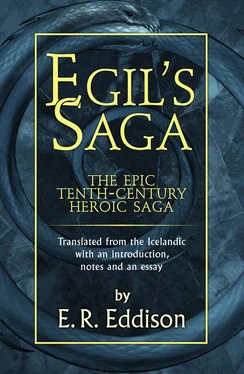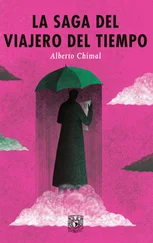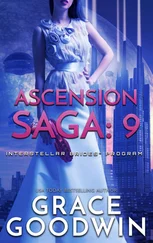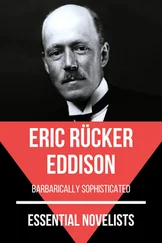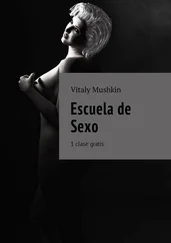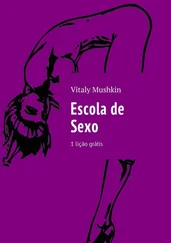*Ari, Libellus Islandorum , ch. 1. Cf. Landn.
* The Travel Diary of a Philosopher , Part III, ch. 26 (Jonathan Cape).
* The Works of Robert Louis Stevenson: Tales and Fantasies , vol. IV, p. 372, Edinburgh, 1897.
THE SAGA
So much for the foundations. The building itself is before our eyes in one of its most characteristic elevations, in the shape of Egil’s Saga . Here I will not waste time on trying to say more briefly what has been said, rightly and once and for all, by the late W. P. Ker in his masterpiece of inspired criticism, Epic and Romance . To complete our background, however, it may be useful to note a few of the salient features of that peculiar form of prose narrative which is Iceland’s contribution to the creative literature of the world.
A saga may be roughly defined as a prose narrative which deals dramatically with historical material, and in which the interest is concentrated upon individual persons, their characters, actions, and destinies. Rough as it is, this definition will serve to indicate distinctions between the Icelandic prose epic and the products of other countries and other ages. A glance at some of these distinctions may be the readiest way towards an appreciation of what a saga essentially is.
The saga is like Homer in that it is heroic in matter and in spirit: it is unlike, in that it is prose, not poetry; that its interest is more purely individual (the epic opposition of Trojan and Greek has no counterpart in the sagas: how far removed are the two attitudes is seen if we contrast the treatment of that opposition by Homer with the treatment in Egla of the opposition of the King and the great houses); that it eschews the supernatural and the marvellous, whereas the Gods in the Iliad are ever present, often as protagonists in the action, and the Odyssey is packed with magic, monsters, portents, and supernatural beings. Moreover, swift as is the movement of Homer, the action pauses continually for the introduction of poetic ornament, simile or description. The action of the saga never pauses except for the introduction of genealogical information.
The historical books of the Old Testament are, save in the single circumstance of their being prose and not poetry, still further removed from the saga. Their outlook is national and theocratic in a far higher degree than Homer’s. French Romance, again, is epically national (Christendom against the Paynim), and abounds in miracles and marvels; besides this, it presents other qualities which distinguish it sharply from the saga: its historical basis is generally flimsy, and, which is more important, history is to it not an end in itself but a framework for fancy’s most rich and unrestrained embroidery; its characters are types, not individuals; its main interest, wild and strange adventure in a dreamland of chivalry and romantic love; its method, formless and luxuriantly meandering. The heroic tales of Keltic tradition, apart from the varying but always large part played in them by the mythical element, differ from the sagas more fundamentally than do even the Romances of chivalry. This is because the old Keltic heroic story is in its processes the direct opposite of the Icelandic; the instinctive idiom and figure of the one is rhetoric and hyperbole; of the other restraint and meiosis. Thus words and phrases to the Kelt, in his great scenes, are material to be poured out in a spate of eloquent emotion; in the saga, on the contrary, the expression becomes more tense and curbed as the situation heightens, until words and phrases have effect individually and apocalyptically like lightning flashes, each trailing behind it (for in this method the effect often depends less on what is said than on what is left unsaid) a turmoil of associations like rolling thunders.
There are two more masterpieces of prose narrative which we may profitably contrast with the sagas: the Arabian Nights , in which the action is slowed down to give leisure for the luxurious contemplation of every form of sensuous beauty; and Boccaccio’s Decameron , in which, on the whole, plot and situation outweigh character. By the beauty of nature *the Northman (if we may judge from the sagas) set little store: by physical beauty in man and woman he set much, but was content to note it in his terse objective way, “the fairest of men to look on”, seldom going into detail and never permitting it to interrupt the stride of his story. The sagas abound in dramatic situations, but they rarely excel in plot. But the briefest consideration of, for example, Njála or the little saga of Hrafnkel Frey’s-priest, both of which are masterpieces of plot-construction, is enough to show that the plot depends for its whole life and power upon the personalities of its actors: upon Njal, Skarphedinn, Flosi and Kari and a host of living, if minor, characters in the one case, and upon Hrafnkel and Sam in the other. And we need but call to mind any great scene, such as Njal’s burning or (in our own saga) the Höfuðlausn scene in York, to see how the whole art of dramatic situation, suspension, irony, clash of motives and of wills, and every circumstance of tragic grandeur is bent to the singlepurpose of conjuring up in living reality individual men and women without whom the situation would be left meaningless or commonplace: Eric and Arinbiorn, Egil and Gunnhild.
We have not yet looked at the modern novel, nor, for that matter, at the Elizabethan drama. Here at least is to be found that preoccupation with individual character for which we have so far found no parallel outside the sagas: Squire Western, Becky Sharp, Victor Radnor, Diana of the Crossways, Nevil Beauchamp; Beatrice in Much Ado , Falstaff, Othello, Hamlet, Cleopatra, Vittoria Corombona, Bosola, Flamineo, Brachiano. On the whole, Shakespeare and Webster are closer to the saga in their treatment of character than are the novelists. The novel, through its protean variations from Proust to the detective story, is almost always analytic: it would be truer perhaps to say that it nearly always employs analytic processes from time to time. But the saga is never analytic. The novelist is often introspective: the saga never. Drama, on the other hand, lends itself naturally to the revelation of character by direct word and action. So that we shall more readily find in Antony and Cleopatra and The White Devil than in the pages of the novelists passages to remind us of the peculiar architectonic of the sagas, where the living characters of the persons are built up for us as in the experience of actual life, by the cumulative effect of revealing action or word; and, as in life, events that at first seem unrelated are built together to a climax, and we look back and see, only when the drama is done, the significance of things and persons that till then we may have thought irrelevant. The working out of the tragedy of King Harald Hairfair and Thorolf Kveldulfson in the first twenty-two chapters of Egla is a notable instance of this architectural method of narrative.
We noticed just now that physical beauty plays but a small part in the sagas. But there is a beauty too of human action, and the part assigned to this is a very great one. Professor Gordon well says: “Probably in no other literature is conduct so carefully examined and appraised; and the basis of the valuation is not moral, but aesthetic. In no other literature is there such a sense of the beauty of human conduct; indeed, the authors of Icelandic prose, with the exception of Snorri, do not seem to have cared for beauty in anything else than conduct and character. The heroes and heroines themselves had the aesthetic view of conduct; it was their chief guide, for they had a very undeveloped conception of morality, and none at all of sin”. *We may well rub our eyes, and wonder whether we have not dreamed ourselves back to Hellas, and the old Greek ideal of καλός κάγαθός. There is indeed a kinship between the Greek spirit and the spirit of the sagas. Σωϕροσύνη , for which we have no word in English, is the governing law of Northern aesthetic as it is of the Greek. It is not ‘temperance’, or ‘moderation’, drab virtues of little men negatively withholding them from this and that. It is rather the power by which a man may, in spirit, ride whirlwinds, but control them; may be passionate, but not slave to passion; may (as Webster in his Italian dramas) tread, safe and triumphantly, the perilous knife-edge of high tragedy where it leads across gulfs of sentimentality and melodrama which lesser poets do not dare to approach. Sc it is that, just as there is a Greek restraint and perfection about the practical actions which enthral the saga-man’s mind with their beauty, so is the speech in which he records those actions informed with the like qualities. The best Icelandic prose is deliberate, simple, and laconic, using the rough, salt speech of men of their hands: direct, unselfconscious, farmer’s talk, unsophisticated, yet classic and noble, because it is the talk of a people bom with a natural instinct for language and for dramatic narrative.
Читать дальше
